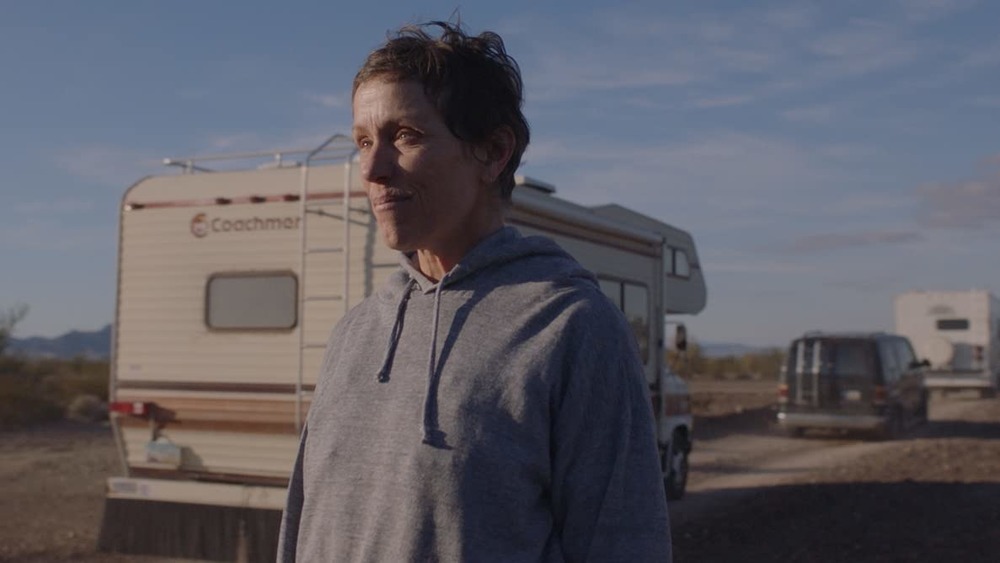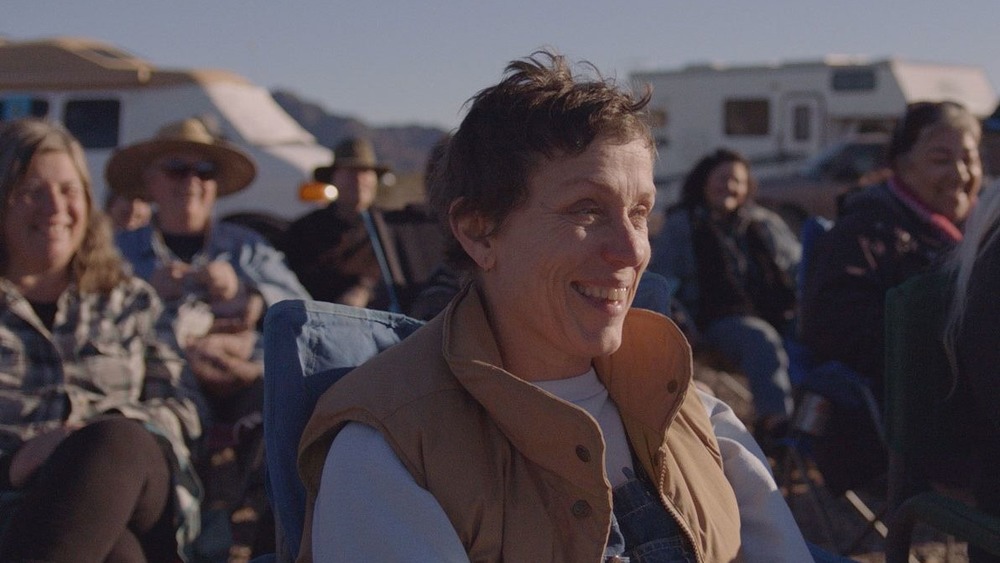The Ending Of Nomadland Explained
Chloé Zhao, the director of Nomadland, is great at telling stories about America that feel fresh. In Nomadland, she follows Fern, a woman played by Frances McDormand who decides to sell most of her possessions and roam the country in a van after losing both her husband and her job in fairly quick succession. The movie takes place in the wake of the 2008 financial crisis, and shines a light on blue-collar people who were impacted by the chaos. Nomadland focuses on people on the edge of poverty who are trying to make the best of what life has to offer them, and it's been widely acclaimed as a potential frontrunner in this year's awards conversation.
Although Nomadland isn't a movie that's particularly heavy on plot, the movie's ending brings Fern's journey full-circle. It's a reminder of the hollowness of the American promise, and the way it went unfulfilled for so many people in the wake of the Great Recession. Now, as the country deals with another economic crisis, Fern's story feels even more potent than it might have otherwise.
In Nomadland, Fern returns to her old job
In the third act of Nomadland, Fern returns to places she frequented at the very beginning of the film. She comes back to her seasonal employment with Amazon during the annual holiday rush. She also goes back to the Arizona commune she visited near the start of the film. It was here that Fern met many of the nomads that she would continue to interact with as the story progressed.
Upon returning to Arizona, Fern learns that Swankie, one of her closest friends, has died. Fern and the other nomads pay tribute to Swankie in the wake of her passing by throwing rocks onto a fire. Then, Fern returns to her former hometown of Empire in Nevada, which is where the movie — and her journey — began. Returning to her former home one last time, before leaving it behind for good, serves as the film's emotional climax.
Fern returns to her old home at Nomadland's conclusion
Throughout the film, Fern has described what Empire was like in the good times. She said that, although her house wasn't much, it was set against a wide expanse of land that was totally open and untouched. At the end of the film, we see that expanse for ourselves as Fern returns to her former house and finds it abandoned. Like the rest of Empire, it's a shell of what it once was, and there's not a sign of life in either her old house or in the entire town.
In one particularly beautiful moment, Zhao chooses to imitate the famous ending of The Searchers, framing Fern as she walks out the backdoor of her former house and into the open wilderness that surrounds it. It's a quiet moment, and serves as a metaphor for the wreckage that the financial crisis has left in its wake. Fern and her fellow nomads were pushed out of the economy, and now make a living on the edges of it. Empire is a little ghost town, hollowed out by a recession that its residents had no hand in causing.
Nomadland ends back on the road again
Fern's journey doesn't end with her return to Empire, though. Although it used to be her home, Empire no longer means what it once did for her. Now that her husband and community have both vanished, Fern decides to head back out on the road. She sees her van as her new home, and uses it to travel around the United States. The movie ends on a shot of Fern's van driving away, set against a vast expanse of countryside.
In its final moments, Nomadland suggests that Fern's decision to become a nomad, as lonely and sad as it sometimes is, was ultimately the right one for her. She was squeezed out of an economy that no longer had a place for her, and she makes the best of the options left. Fern chooses her life of quiet solitude, and is ready to return to it after visiting her former home. She may have returned to Empire for some closure, and she might even have found it. For Fern, though, the deep wounds of her past may never fully heal.



